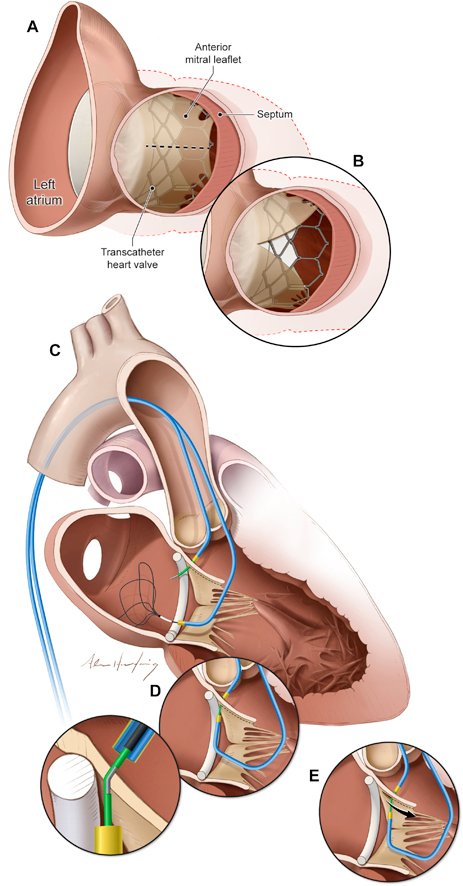TMVR - LAMPOON Technique
Transcatheter Mitral Valve Replacement (TMVR) is an advanced, minimally invasive procedure that treats severe mitral valve disease, particularly in patients who are at high risk for traditional open-heart surgery. One of the key challenges of TMVR is ensuring the new valve does not interfere with the function of other heart structures, particularly the left ventricular outflow tract (LVOT). A highly specialized technique called LAMPOON (Laceration of the Anterior Mitral Valve Leaflet to Prevent Outflow Obstruction) has been developed to address this challenge and is becoming an essential part of the TMVR process in certain high-risk cases.
What is the LAMPOON Technique?
The LAMPOON technique is designed to prevent LVOT obstruction, which can occur when the anterior mitral valve leaflet blocks blood flow after a TMVR procedure. This is a serious and potentially life-threatening complication, particularly in patients with certain anatomical features, such as small ventricles or a large anterior mitral leaflet.
During LAMPOON, the surgeon uses a catheter-based technique to deliberately cut the anterior mitral leaflet before placing the new valve. By preemptively creating a controlled tear in the leaflet, the technique reduces the risk of it obstructing the LVOT after the new valve is implanted.

How LAMPOON Works
The procedure is typically performed under general anesthesia, with the guidance of real-time imaging such as fluoroscopy and transesophageal echocardiography (TEE). The LAMPOON technique is carried out as follows:
Benefits of the LAMPOON Technique in TMVR
Which patients recieve the LAMPOON in TMVR
The LAMPOON technique is particularly beneficial for patients who:
Risks and Considerations before LAMPOON Technique
While the LAMPOON technique is highly effective, it carries some risks, including:



